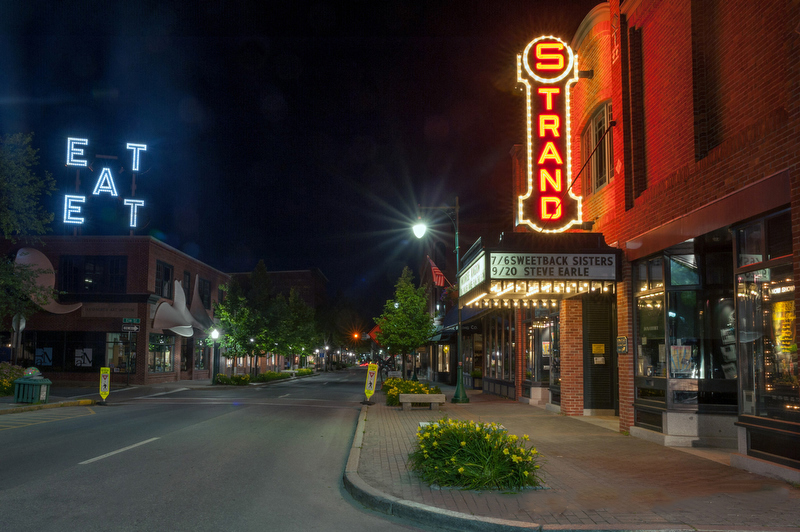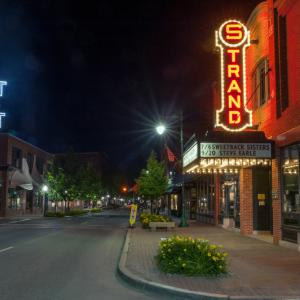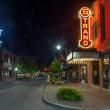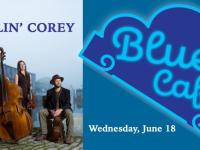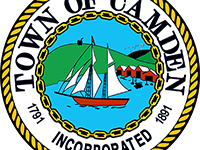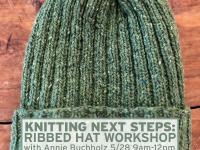Jersey barriers, parklets and pocket parks: Rockland Downtown Traffic Committee makes recommendations
ROCKLAND — “It does not have to be a tourist town that we sell to others but avoid ourselves,” said Connie Hayes, Rockland resident and member of the 2021 Planning Committee for Downtown Rockland.
On Wednesday, April 8, the 22-member committee, facilitated by Rockland Main Street’s David Gogel and City Councilor Louise MacLellan-Ruf, presented recommendations to Council regarding a plan for road and sidewalk use in the downtown area, infrastructure and beautification improvements, what was best for Rockland businesses, enhancement of public access, and serving the community during COVID-19.
They prioritized public safety, feasibility, community resilience, and finding solutions that could bolster economic vitality, as well as addressed concerns and tried to maximize benefits for all stakeholders.
Traffic lanes:
“It became clear that our recommendation should maintain two-lane traffic on Main Street,” said Gogel.
Gogel said that despite feedback desiring two lanes, many businesses acknowledged that spilling out into the street during the one-lane road structure of summer 2020 is what saved their businesses.
Implement a Parklet Program:
Allow businesses to move into parking spaces, set up seating, in front of their businesses to safely serve the community members who don’t feel comfortable going into restaurants despite the changes in COVID guidelines.
Incorporate ways that those seats can be used by the public when the businesses are closed.
Each business must apply for use of a parking space, once the application has been created.
Click here for a definition of Parklet as defined on the Committee’s website: https://www.rocklanddowntown.com/
Pocket parks:
Make use of pocket parks – more seating, engagement activities, pop-ups of different businesses, additional trash/recycling, food waste cans – all options for multi-uses during the day. Enhance use of other less-used spaces, such as the Thorndike Loop, the CMCA courtyard, and the Farnsworth sculpture garden.
Increase pedestrian safety:
Work toward adherence to the speed limit on Main Street.
Implement traffic-calming strategies such as increasing signage for pedestrian crosswalks, integrating street art, adding speed limit signs. MacLellan added optical illusion crosswalks to the list.
Signage:
Provide consistent signage around public parking, as well as offering more off-street parking to better accommodate restaurant usage of Main Street spaces.
Create signage that emphasizes community space and provides clear guidelines on how the community can use that space.
Have signs that better designate the curbside pickup locations.
Read the full Committee report at https://www.rocklanddowntown.com/
In reviewing the Committee’s meeting minutes, Councilor Sarah Austin got into the specifics of the recommendations, making particular note of what she believed to be missing from the plan.
She said recommendations are missing a component: It has the engineering, the education – but where’s the law enforcement of the speed limit? The committee mentioned adding traffic-calming devices and strategically placed speed limit signs, but where’s the police department? According to Austin, no one has ever been pulled over for speeding in that area.
Austin also questioned the lack of attention toward painting street lines for bicycle sharrows and providing bike racks.
The sharrows question was answered by Councilor Nate Davis, who said the lanes are painted every year, but it’s at the end of the season.
According to Gogel, the Committee did prioritize bike racks in the pocket parks as well as in the rears of parklet parks, when possible. Also mentioned in the Committee meeting was possibility of a bike repair station.
Austin also remarked on the lack of recommendation for beautification within the downtown area.
City Manager Tom Luttrell said the Committee is looking at beautification of the Jersey barriers by painting them, possibly putting planters on the barriers, or getting MDOT permission to instead use concrete planters like the ones used to close off Oak and Winter streets last year.
The planters are already in stock, using COVID-19 grant money. As for the Jersey barriers, each restaurant will be in charge of painting its own design. Local artists may then be invited to do the painting.
According to MacLellan, the Committee discussed the City’s responsibility and the private owners’ responsibility to keep their area clean, to align with ADA accessibility, to provide a welcoming area, and that the area looks much better than it did. A discussion was also incorporated regarding cleaning up the back end of the Thorndike Building, and allowing for more productive use.
Councilor Ben Dorr added that due to budgetary restraints, purchasing Jersey barriers that had built-in benches were not an option, but could be considered in the future.
Said Mayor Ed Glaser: “A lot of this stuff is starting to get into – not the concept of the plan – but the specifics of how it’s going to be delivered.... I don’t know that we should be spending too much more time getting into the weeds of exactly how it’s going to be done. This could go on forever.”
Cost to the City
Councilors previously approved $30,000 of the Tillson TIF. The money set aside for beautification and planning will be used on paint supplies, and maybe the artists’ time for paintings in the street and the illusions in the road. The City already has enough (“hopefully”) Jersey barriers and planters, according to Luttrell.
Reach Sarah Thompson at news@penbaypilot.com
Event Date
Address
United States

